My Love Affair with Vintage Aprons
- Gerda Herenius

- Jan 27
- 6 min read
Updated: Feb 18
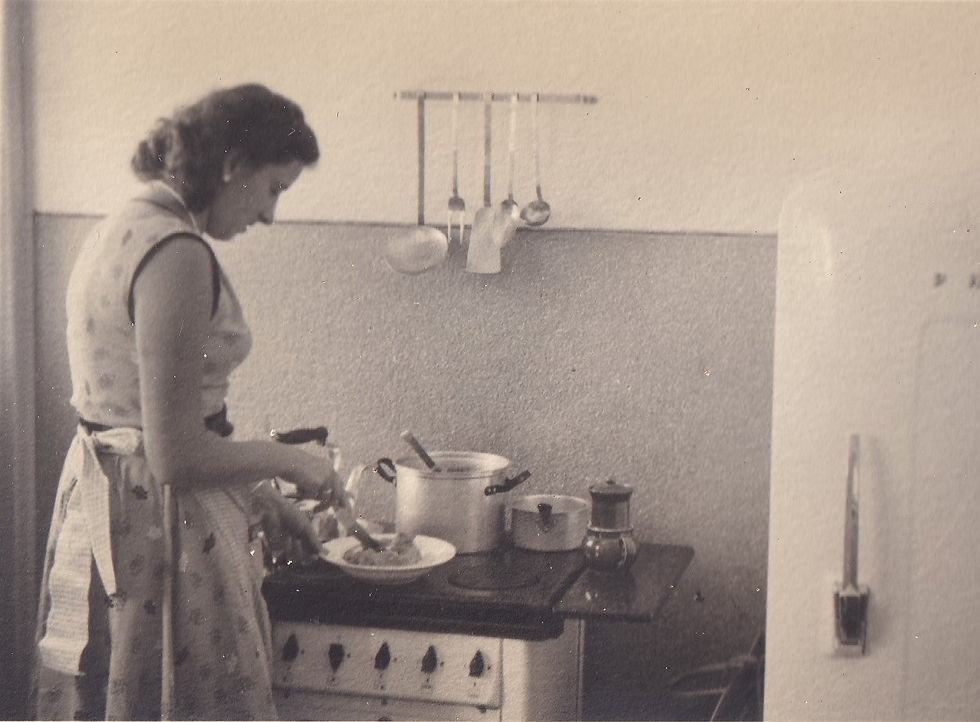
I don’t know whether it was lockdowns, turning sixty, or my neighbour confessing to me that she loved aprons.
I went from someone who avoided aprons—growing up in the sixties and seventies, it just was not cool to wear aprons or be domestic in any way whatsoever—to someone who simply loves pottering around the kitchen and wearing the prettiest vintage apron I can possibly find to make.
My mother subscribed to the Burda, a German sewing and fashion magazine, which, fortunately for her, was available in South Africa. I began buying my own Burdas when I started earning a salary. I inherited my mother’s collection when she died; the oldest magazine is from 1968.
I collected Burdas until the early 2000s when I found the clothing styles becoming clunky, unfeminine and downright ugly at times. The old Burdas had lots of crafts, needlework, sewing patterns, stunning knitting patterns, and many other brilliant ideas. The newer ones, not so much as needlework and knitting especially, fell out of flavour.
When I look through the old sewing magazines, I am fascinated by how feminine and neat women were in my mother’s generation, and in preceding generations, even when they were cleaning house and cooking dinner. Housecoats and aprons were functional yet beautiful and quite stylish.
In South Africa, middle- and upper-class women of all races, never clean their own homes or do their own gardening. They usually cook their own meals and might perhaps do some pottering around the garden. In every other country, middle-class women do their own cleaning and gardening.
Today, in more progressive countries, domestic work will be shared with their male partners. Wearing an apron is not a fashion focus and wearing a house dress while doing domestic work is unheard of. An apron serves purely the functional purpose of protecting your clothing whilst cooking, for males and females alike. Pretty (for women) does not even come into the equation.
Because I was raised in a Dutch home, having someone else do my cleaning has never sat well with me. It is so ingrained in my psyche that you do your own work, that even to this day, I do my own cooking, cleaning and gardening. If you work full-time outside the home, you (with your partner’s help, of course) do your domestic chores after dinner in the evenings or on the weekends.
No matter their class, women of my mother’s generation—children during War II; children, teenagers and young adults after the war—were very feminine and always neatly dressed, always. There was no such thing as sloppy or uncared-for clothing. When you went out the door, you dressed up: hair done, lipstick, high heels, hat or head scarf, matching handbag and gloves. At home, you were somewhat more casually dressed but still very neat and presentable should guests come a-knocking. Your apron was a fashion statement of sorts and you always wore a pretty stylish apron to protect your clothing whilst cooking. Even cleaning house or gardening, women wore special house dresses, feminine and presentable attire.
By the fifties, women started wearing shorts in the garden and at the beach. But they were nice, presentable and modest shorts compared to today, matched with a handsome shirt or charming blouse and a pretty hat to match. Bathing suits were matched with bags, beach jackets and hats. Everything was an ensemble that came together to present a delightful feminine picture of composure and grace even while cleaning the bathroom and kitchen.
My mother was born in 1933 in Drente in the Netherlands, and died at 60 in 1993 in South Africa. In all the 33 years that I had known her, I had never seen her dressed like a slob. I had never seen her in a sloppy tracksuit pants and sweater. She did all her own housecleaning and gardening, granted, she was a full-time house executive. She made our clothes and things for the home, and knitted our jerseys. And if she needed to paint a room, she would put on a pretty housecoat over her clothes, specifically for painting—unlike me, she didn’t get paint all over herself—and simply got on with it.
My generation also inherited the tendency to dress neatly, although we did start wearing tracksuits and more casual clothing. But still, we were aware of being feminine and attractive. Even when ripped jeans came into fashion, the blouses were sometimes smocked or embroidered, often with elegant sleeves and necklines.
Dresses were similarly detailed, whether peasant or hippy. In the 1990s, it became fashionable for women to wear men’s clothing. Feminine attire slowly slipped off the scene. Somewhere along the line, women started realising again that female clothing appealed to men, and these started returning to the fashion scene, but this time with an emphasis on sex appeal. Fashion shifted to a sharp focus on attracting male attention or the stark opposite, androgyny. Feminine attire had left the scene entirely. Sexy, I’m afraid, is a long way off from feminine.
I have always had my own style of dress and was heavily influenced by my mother’s attitude to clothing. I have to admit, I still struggle to wear white shoes in winter.
As a teenager and into my twenties, I always had my nose in the Burda and magazines with recipes, crafts, knitting and crochet patterns. Somewhere over time making your own clothes was no longer seen as trendy or classy. Having any domestic or homebody inclinations became an embarrassment, something to be denied and even ashamed of.
I am over sixty, a breast cancer survivor, and a homebody. I rebelliously decided that I owe it to myself to live in a way with which I feel comfortable. I love cooking and making things with my hands. Upon turning sixty, I gave myself permission to be eccentric, odd or plain, whatever I felt like, disregarding what others might think. It is sad that I only managed to do that after turning sixty but at least I finally did and I am so much happier for it. I have noticed, though, that, especially in the United States, there is a strong grass roots movement back to homesteading and homemaking. I find this very interesting and encouraging.
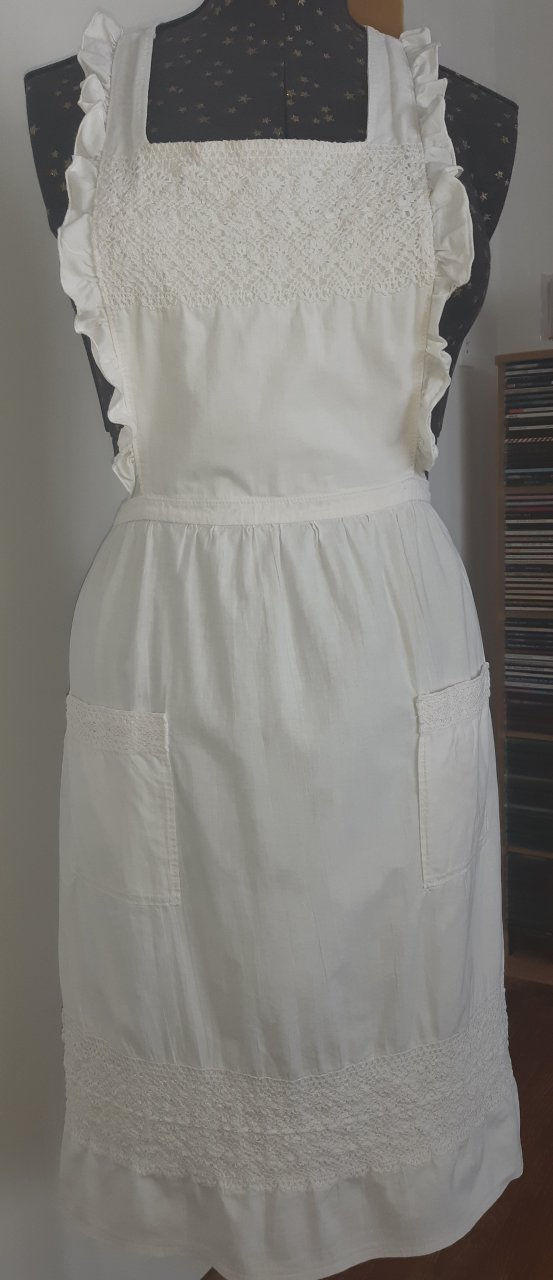
I needed an apron to protect my clothing as I do a lot of cooking. On a nostalgic whim for a different time and era, I made an old-fashioned frilly white apron as my first project.
I made it of plain white cotton. The apron piece is gathered at the waist with two separate pockets. The neck straps cross at the back.
For a final touch, I bought some cotton lace strips and sewed them on the bib and bottom of the apron piece. To match the pockets up with the rest of the apron, I sewed narrower strips of similar-looking cotton lace on the top of the pockets.
I discovered that chefs’ jackets are washed with oxygenated whitewash which is bleach- and chlorine-free. Bleach eventually yellows white garments or sometimes even turns them a shade of pink. Oxygenated wash works beautifully and now I happily make white aprons that always look a special kind of beautiful.
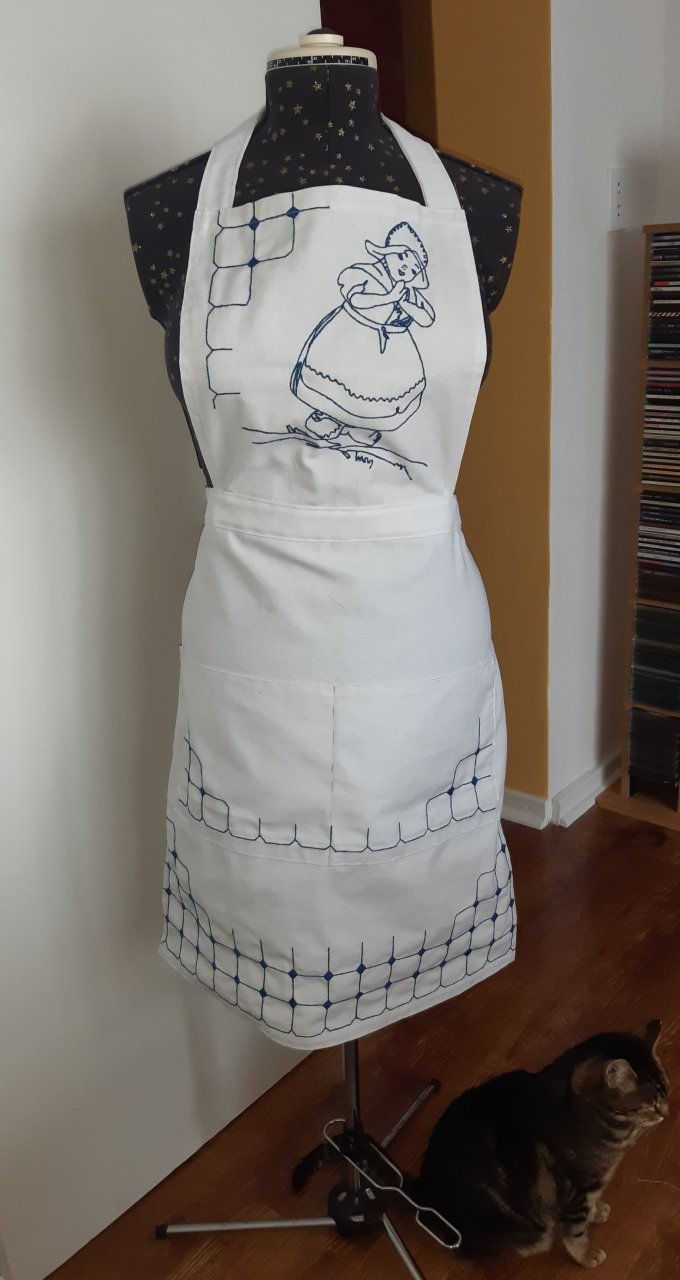
The second apron I made was also white.
I intended to embroider it with a picture of a little Dutch girl on the bib, so I chose thick white cotton to make embroidering easier.
Because the material was quite thick and heavy, I opted for a flat apron piece rather than the gathered piece I used with the first apron. The pocket is in one piece, stitched down the centre to produce two separate pockets.
I embroidered the Dutch girl in chain stitch. The borders were done in chain and satin stitch. I used two threads throughout.
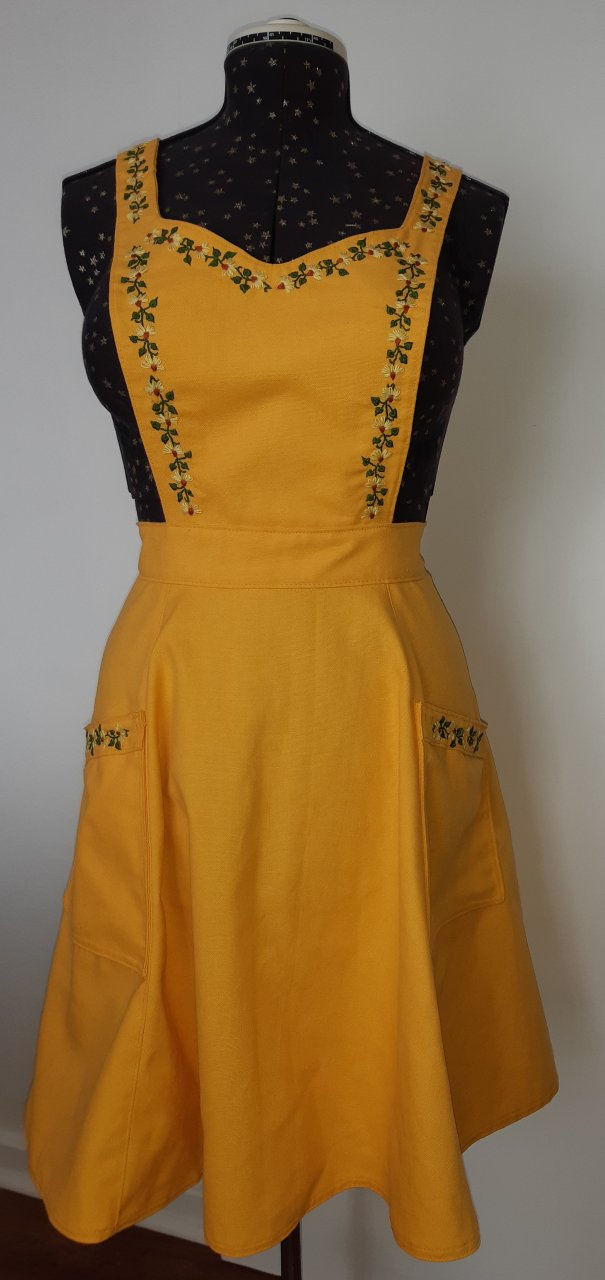
My third apron is made of the same type of material but in yellow as I also intended embroidering this one.
It crosses at the back, the apron piece is a full skirt, flared in three sections, and the pockets are lined up on the side seams.
I embroidered the daisy flowers, stems, and leaves with four threads, using stem stitch for the stems, satin stitch for the leaves and calyxes, and lazy daisy stitch for the flowers.
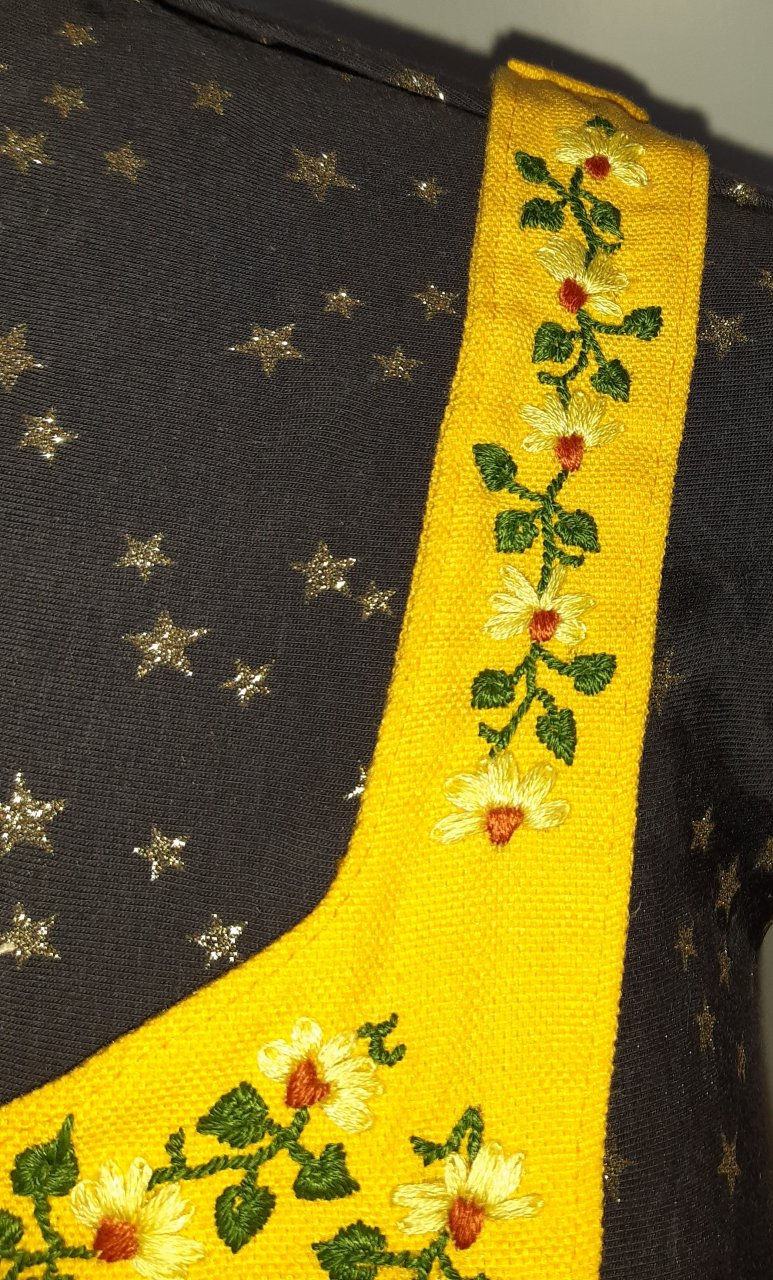
So, there you have it. I am on a mission to make a collection of vintage aprons, an apron for every day of the week and even more if need be. I am trying to choose the next one to create from the swarm of ideas swirling around in my head. Ah, to embroider or not to embroider? To appliqué or not to appliqué?
In my next article I will share with you a basic apron pattern, and show you how to make your own aprons. The pattern can be adjusted and decorated to suit your own taste and style.
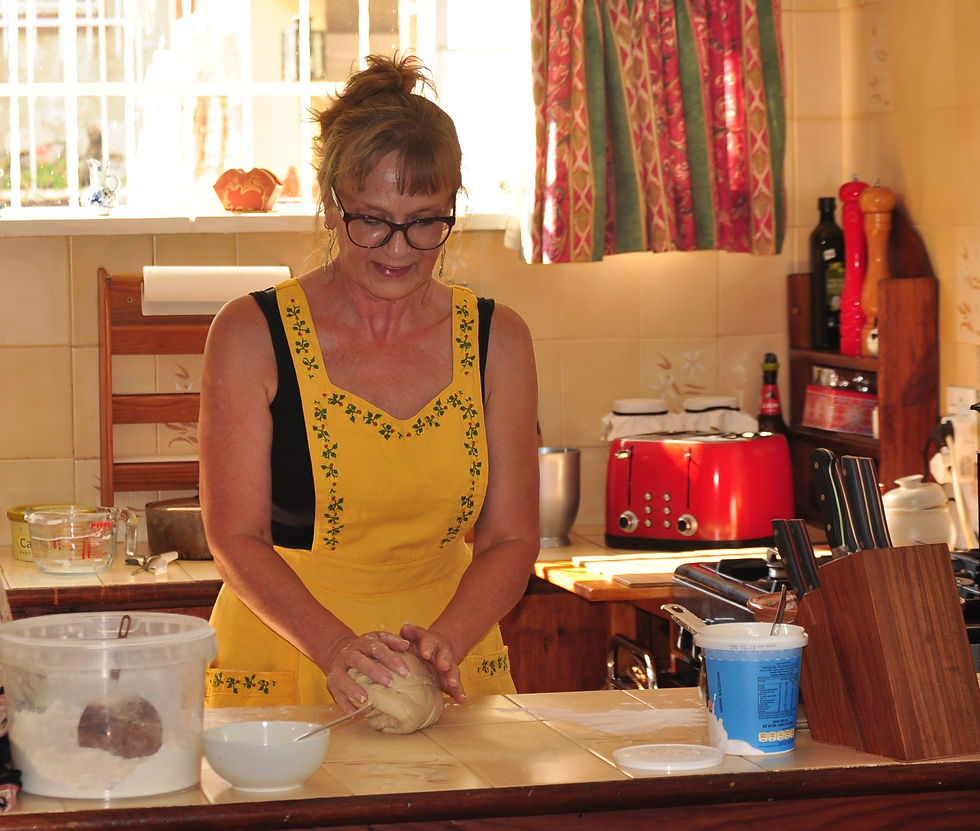

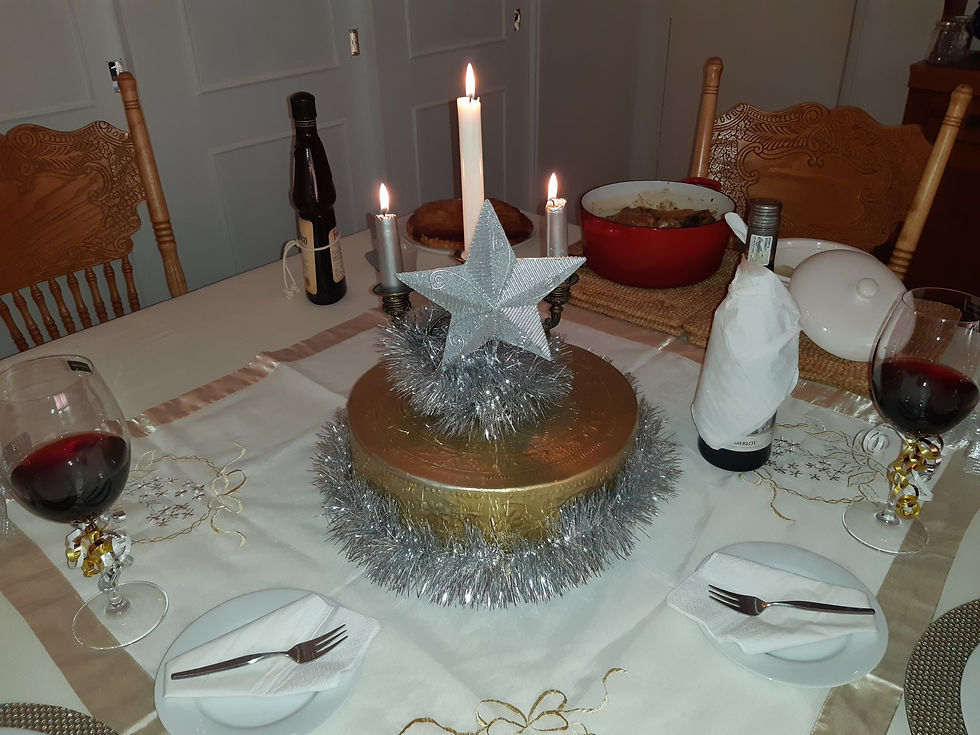

Comments